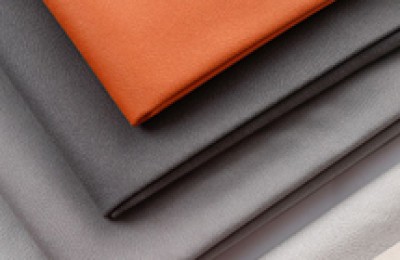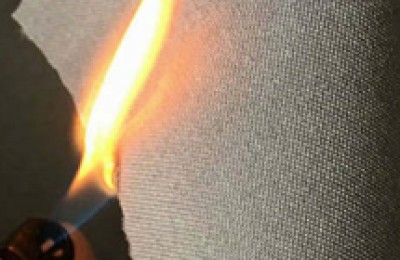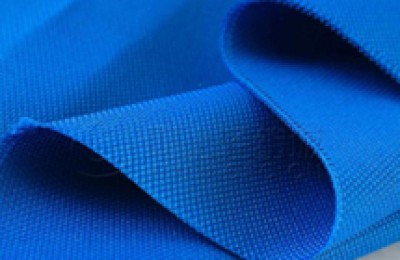The color of the dyed fabric must be produced according to the color number or sample specified by the customer. However, in actual production, sometimes the color of the dyed finished product does not match the specified standard color and exceeds the allowable color difference standard.
Confirm the color sample first
1. Self-evaluation of color swatches
Use gray cards to compare colors. The requirement between the original sample and the sample is 4.5. When using a tester to match colors, generally △E<1. Considering the system error, the internal control standard is △E<0.6, and we strive to get the sample right the first time. If the requirements are high, hue △H and chroma △C should also be taken into consideration.
Be fully aware of the heat and light sensitivity of dyes. There are fewer photosensitive dyes. For example, try not to use Cibaclon Yellow CR-01, especially Cibaclon Yellow C-2R. Most dyes are more or less heat-sensitive. Shilin dyes are more prominent. Cold, heat, dryness, and humidity all have an impact on the color and light. When making color comparisons with such dyes, you must consider the trend of the dye’s color and light after stabilization, and reverse the direction if desired. A little off. For example, after the color of most dyes is stabilized, it tends to be slightly darker in red. When the sample is slightly colder after printing, it should be slightly brighter in green, so that when the color is stable, it will be exactly the same as the original color. Using dyes with severe photosensitivity and heat sensitivity as the main color proofing may cause color printing on mass-produced color cloths, which may even be irreversible in serious cases, such as olive green R, yellow C-2R and other dyes. Therefore, such dyes cannot be used.
Whether the hand sample meets the customer’s requirements, you must be aware of regular customer proofing, and it is easy to make accurate samples based on customer habits. Different regions have different color preferences.
Generally, customers require at least 3 prototypes, namely samples A, B, and C. Sometimes, 12 samples are also required. Consider aspects such as depth, lightness, brightness, and hue to improve the first-time accuracy rate.
2. Approval of the sample
When customer opinions and actual When the situation is different, possible light source problems should be considered and communicated with the customer.
When a customer reports that most of the samples in a color palette are too dark, it should be considered that the customer may be comparing the samples in two layers, especially for thin and transparent fabrics. become darker. Some large companies require 4 layers of matching colors for thin and transparent woven fabrics and knitted fabrics. The norm is a single layer of color matching.
When the “jumping light” is serious, consider changing the dye to improve the “jumping light”. To understand the “metameric” properties of dyes, make full use of colorimeter to screen dyes. When the dyes applicable to our factory cannot meet the customer’s “light jumping” requirements or the “light jumping” is at △E<0.5, we should communicate with the customer. Once the factory's sample is confirmed and the confirmation sample is used as the reference sample, there will be no "light jumping" problem. Never choose a dyeing formula that is unstable in mass production just to meet customer requirements.
When color matching small samples for direct production, try to color match under various light sources, such as D65 natural light and fluorescent lamps. There should be no serious “light jump”. If it is serious, If so, please confirm with the customer before proceeding with production.
3. Large sample (head cylinder sample) production Confirmation
The color and light requirements for large sample production should be strictly in accordance with the customer’s approval opinions, and the original sample should be used as the basis to deviate from the confirmation sample. It is best to persuade the customer to use the confirmation sample as the basis to deviate from the original sample. . Because the fabric specifications of the confirmed sample are consistent with the large sample, it is easy to see the sample, the dye used is consistent, and there is no “jumping light” phenomenon. Generally, the color light is between the two, the gray card reaches level 4 or above, △E<1 (the internal control standard is generally △E<0.8), and customers will recognize it.
The batch difference is controlled above gray card level 4, the color difference between the left, middle and right is controlled above level 4-5, and the batch difference △E<1 (within internal control 0.8). When choosing dyes, try to use dyes that are consistent with the sample prescription. Adjust the color light, and the newly added dye may cause a "light jump" phenomenon. When there is an obvious "light jump" between the large sample and the confirmation sample, there will be a risk of rejection of the large product, which will bring economic losses and reduced credibility to the enterprise. For example, when commonly used dyes with opposite spectrums, such as emerald blue, Shilin RB yuan, B green, T green, R red, etc., are used as added dyes, they should be handled with caution and check whether there is serious "light jumping" under each light source. If there is, it cannot be added.
When repeating and replenishing orders, the confirmation sample of the head cylinder is generally used as the basis to deviate from the original sample and the confirmation sample to keep the color and light of the entire batch consistent. However, sometimes customers insist on using the original sample or the confirmation sample. When confirming the sample as the benchmark, the color direction of the large product sample must be considered.
Post-finishing has an impact on the color light, and the color changes with different color lights. Therefore, after dyeing and setting out, the samples in the imitation finishing process need to adjust the color light and then dye them to meet customer requirements.
Main phenomena
1. Color fastness to light
When making samples in the laboratory, for color plates with light fastness requirements, dyes with good light fastness are required to be selected before making samples, including auxiliary colors, which must also meet the customer’s color fastness requirements. . If there is a dye with poor light fastness in a formula, the light fastness of this color number will be reduced. In addition, dye compatibility should also be considered.
The light fastness on the dye color card refers to the ISO standard, and the test result is an 8-level system; the American AATCC standard is a 5-level system, which is very different. The light fastness series on the dye color card refers to the series at the standard concentration I:1. Therefore, when dyeing light colors with reactive dyes, the dye color must be considered.For local manufacturers, dyes with different batch numbers must also be stacked separately. It is best to use the same batch of dyes when dyeing the same batch of cloth. In principle, do not use dyes with different batch numbers to avoid color differences. The management of auxiliaries should also adopt the same management methods as dyes.
6. Strict process discipline.
Carefully carry out the three-level inspection of the process on the vehicle (self-inspection by the operator, spot inspection in the section workshop and factory). Master the dyeing process conditions and ensure that the dyeing process is carried out according to the process. It is necessary to carefully implement the system of sample checking and pasting for each truck by fabric workers, so as to facilitate inspection and verification, solve problems in a timely manner, and ensure that the color of dyed products conforms to the standard sample. </p








